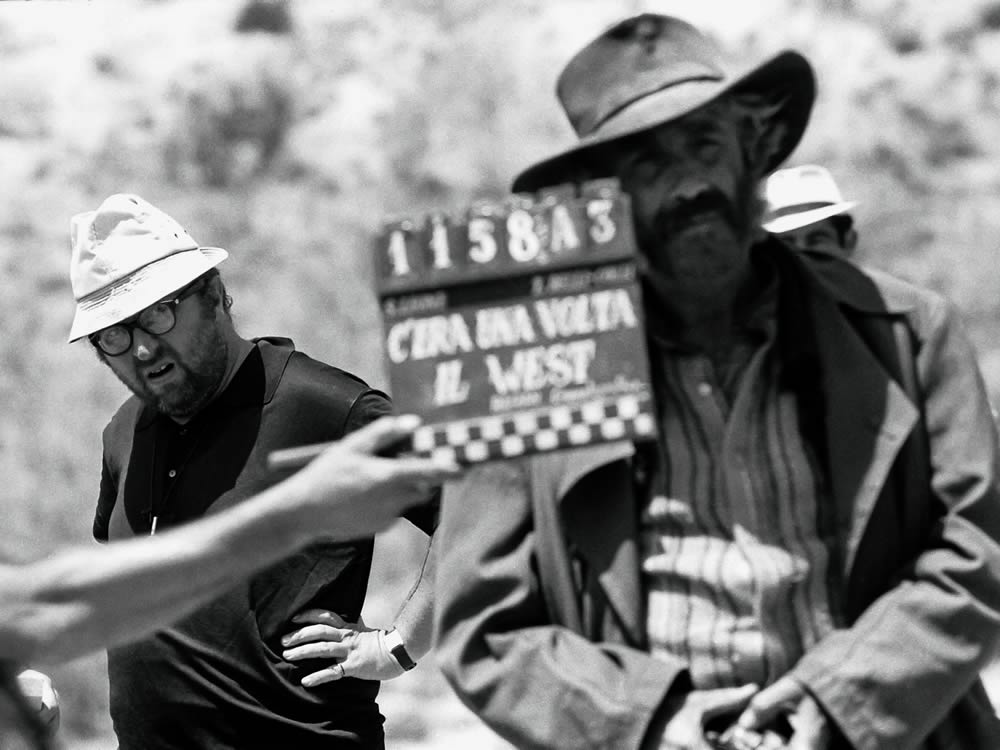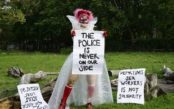[dropcap style=”font-size:100px;color:#992211;”]S[/dropcap]ir Christopher John Frayling’s Once Upon a Time in the West: Shooting a Masterpiece could easily have devolved into a niche dust-gatherer only suitable for film-school geeks, Spaghetti Western fetishists and Sergio Leone devotees. Instead, Frayling has crafted a book for the ages about making a movie for the ages. This is the coffee table book you will actually want to pick up and read.
“It’s an in-your-face style. You don’t have to know a whole lot about movies to get tuned into it. You can see it. You can see what the director’s doing, like Alfred Hitchcock in that way.”
– Quentin Tarantino
Tarantino’s words also speak well to the style and content of the book itself. You don’t have to be a film technocrat to get it. His foreword is both Tarantino’s directorial origin story and a history of modern filmmaking. It will neither bore aficionados, nor put off noobs. If you were never down with Westerns, after reading the foreword, you will, at a minimum, WANT TO BE. If, while watching Reservoir Dogs, you always wondered, why the suits? Now, you’ll know. Enhanced by numerous movie stills and artwork, the foreword is, alone, worth the price tag.
Frayling’s introduction picks up where Tarantino leaves off… and then goes back to the beginnings of the Western genre. It explains how Leone’s childhood, parentage and Italian-Catholic heritage enabled him to serve America’s own history and genre back to itself, in a tastier form, with characteristic European style and flavour. And why America rejected such a sensory feast at the box office. Indeed, much like the foreword, the introduction, alone, is worth the price of admission.
And yet somehow, from here, the book only picks up steam. All the chapters are entertaining and understandable to even the merely curious. None are superfluous or elementary to even the ardent superfan. Non-technical readers will particularly devour the human-interest elements of “The Director”, “Citations of American Westerns”, “The Actors” and “Tributes”. In particular, Leone’s against-type, villain-casting of Henry Fonda is a study in salesmanship and a fascinating psychological mini-profile of both Leone AND Fonda. Same goes for the NON-casting of Leone mainstay, Clint Eastwood.
It plumbs emotional depths that other pictures don’t even hint at
Finally, although “Tributes” contains homages from Scorsese, Carpenter and Milius, its tributary essence is distilled by Joe Dante: “Cults don’t begin in film schools. I think cults begin when you are emotionally moved by a movie. And it is an emotionally devastating film. It plumbs emotional depths that other pictures don’t even hint at. I think that’s partly because of the passion that he brought to it and the fact that the music—in this case it was played on the set and the film was choreographed to it—is heartbreaking. If you love the Western, there’s no way you can’t love this picture. If you don’t love this movie, you don’t care about Westerns. The use of music with the image is a major influence. The way that directors use music changed somewhat after the Leone pictures.”
Amen, brother. Like Keanu Reeves flying away from the phone booth, closing out The Matrix, with Rage Against the Machine’s “Wake Up” blasting the viewer straight into the credits. Indeed, it would be enough if THAT scene/music alchemy was Once Upon a Time in the West’s only enduring legacy. Frayling’s own masterpiece shows it’s not, by far.
Image: Sergio Leone and Jason Robards on set of Once Upon a Time in the West © Angelo Novi
Once Upon a Time in the West: Shooting a Masterpiece is available now
R. Falk Fisher writes daily. He wished he was somewhere else until he realized he was there.



















